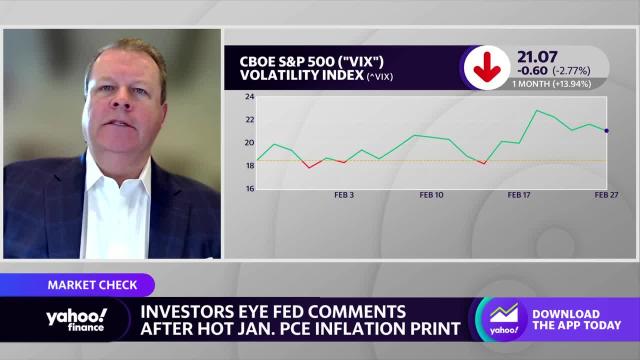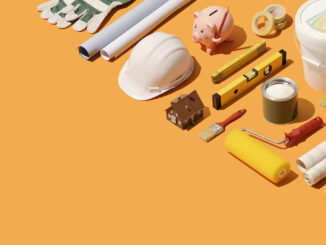
With headline inflation figures coming down and a strong labor market, some believe that the U.S. economy could be on its way back up.
But billionaire investor Sam Zell doesn’t share that optimism.
“When you spread out free money for years at a time, you create significant drag, and I just don’t see how we are going to avoid a slowdown as that whole process comes to an end,” he said in an interview with CNBC earlier this year.
According to Zell, the problem lies with the U.S. Federal Reserve’s easy money policies.
“I think the Fed screwed up by allowing zero interest rates to go on too long, I think we are just beginning to pay the price for that,” Zell points out. “It would be nice to say that it would be great if the Fed got lucky. I’ve been around for 50 years and I’ve never seen the Fed get lucky.”
To be sure, consumer prices in the U.S. rose 5.0% from a year ago in March 2023 — down from their peak 9.1% increase in June 2022. But inflation, which the central bank generally aims to keep around 2%, remains a big concern for Zell.
“Is the definition of coming down going from 9[%] to 6[%]?” Zell asks. “The point is 6[%] is a serious problem.”
And while some believe it’s time to get ready for disinflation — including Federal Reserve Governor Lisa Cook, who according to Bloomberg told an audience at the University of Michigan that the central bank has seen signs that the “disinflationary process” is underway (although “we’re not there yet”) — Zell is even less certain.
“Preparing for disinflation would be a very optimistic thing to do at this point. It’s going to take a while for the inflation pressures to ease, and I think that’s what we have to look forward to.”
If you share Zell’s view, here’s a look at three assets that can help investors fight inflation.
Real estate
Zell made billions in real estate. And it just so happens that real estate can be a great hedge against inflation.
As the price of raw materials and labor goes up, new properties are more expensive to build. And that drives up the price of existing real estate.
Of course, the Fed has been raising interest rates to tame inflation, and that means mortgage rates have gone up as well. So shouldn’t that be bad for the real estate market?
While it’s true that mortgage payments have been on the rise, real estate has actually demonstrated its resilience in times of rising interest rates according to investment management company Invesco.
“Between 1978 and 2021 there were 10 distinct years where the federal funds rate increased,” Invesco says. “Within these 10 identified years, U.S. private real estate outperformed equities and bonds seven times and U.S. public real estate outperformed six times.”
Well-chosen properties can provide more than just price appreciation. Investors also get to earn a steady stream of rental income.
Of course, given that many economist agree there’s economic uncertainty ahead, you’d want to rent to high-quality tenants.
The good news? Some real estate investment trusts (REITs) have very high-quality tenants — including the U.S. government. Meanwhile, there are crowdfunding platforms that let you invest in grocery store-anchored properties, which tend to be resilient throughout economic cycles.
Read more: Your cash is trash: 4 simple ways to protect your money against white-hot inflation (without being a stock market genius)
Fine art
It’s easy to see why art pieces often fetch new highs at auctions: The supply of the best works of art is limited, and many paintings have already been bought by museums and collectors.
Contemporary artwork has outperformed the S&P 500 by a commanding 174% over the past 25 years, according to the Citi Global Art Market chart.
Artwork is becoming a popular way to diversify because it’s a “real” physical asset with little correlation to the stock market.
According to Deloitte’s Art & Finance Report, 85% of wealth managers in 2021 believed art should be included as part of a wealth management service.
It’s true that investing in fine art by the likes of Banksy and Andy Warhol used to be an option only for the ultra rich. But with a new investing platform, you can invest in iconic artworks too, just like Jeff Bezos and Peggy Guggenheim.
Wine
People have been consuming wine for thousands of years. While most collect wine for enjoyment rather than investment, bottles of fine wine become rarer and potentially more valuable as time goes by.
Since 2005, Sotheby’s Fine Wine Index has gone up 316%.
As a real asset, fine wine can also provide the diversification you need to protect your portfolio against the volatile effects of inflation and recession.
You can invest in wine by purchasing individual bottles — but you’ll need a place to store them properly. Residential wine cellars often cost tens of thousands of dollars. If not stored at the right temperature or humidity, the bottle could be compromised.
That’s one of the reasons why investing in fine wine used to be an option only for the extremely wealthy. But new platforms allow you to invest in investment-grade wine too, just like Bill Koch and LeBron James.
Source: finance.yahoo.com
ENB
Sandstone Group



